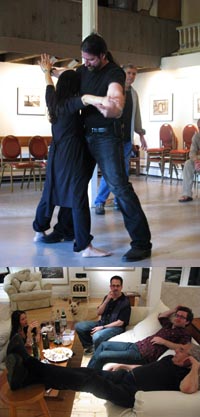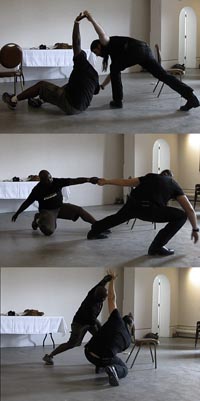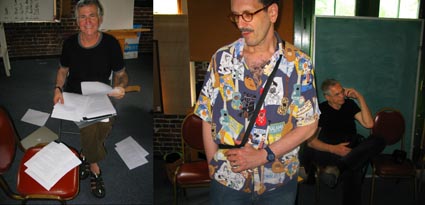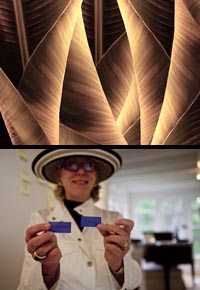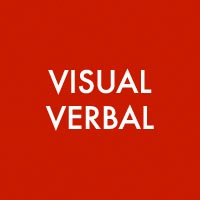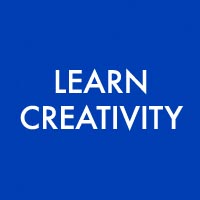Kernan Creativity Workshop – Day 4
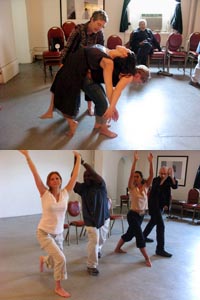
Flow was easier today.
It could have been we had time to sleep on what we experienced yesterday. Often, I find that in a research and discovery phase you get fatigued from becoming supersaturated with new information. Then you have to put the problem down for a while. Gestate. When you return you don’t just pick back up where you left off. Essential things, sometimes conceptual, sometimes emotional, sometimes visceral, have been processed. I think of it as adding energy into an atomic structure. Add enough and electrons jump to a new level.
Alison Chase (veteran modern dancer, former artistic director of Pilobolus, generally delightful woman) worked with us today. We worked in teams. Mimicking. Passing movements down chains of people. Working in pairs to find a common center of gravity while transferring weight back and forth. All the exercises built upon one another, culminating in free form improvisational movement piece. She had all kinds of wisdom to share. “Play with ease before you go for virtuosity.””In improvisation there’s always a gray zone. Don’t stop and think. Just work your way through it.””Don’t think. Just respond.”
Greg Heisler and I spent most of the morning rolling around on the floor together. It took a while to work it out. But when we did, we did good. It felt good – physically, mentally, emotionally. Then we noticed the smudge of gum that had been under us the whole time. Neither one of us wants to know where it had been before we came in contact with it or where it’s gone since.
At the end of the day there was a palpable sense that something had been accomplished. What’s more it was accomplished in a medium most of us have essentially no skill in. It was confirmation of the suspicion that even out of our fields something resonant can happen. Alison encouraged us to continue, “Get our of your idea and respond. Stay in and things come out.”
Oh! Also. Did I mention we’ve been laughing the whole way through? Play leads to joy. Joy leads to inspiration. (There are other roads to breakthroughs besides “No pain, no gain.”)
We have a big assignment for tomorrow. “Extend a photograph.” Find out what that means tomorrow!
I tested my project tonight. It worked out great. I finally jumped into installation/sculpture work.
I’m sure that the other participant’s projects will be really interesting.
Check out Sean’s blog entries on the class here.
Check out fellow participant Russell Kaye’s blog here
Who’s Sean Kernan? Find out here.
Read my in depth conversation with Sean here.
Read Sean interviewing me here
Check out Sean’s creativity workshops here.
Check out my creativity workshop here.


